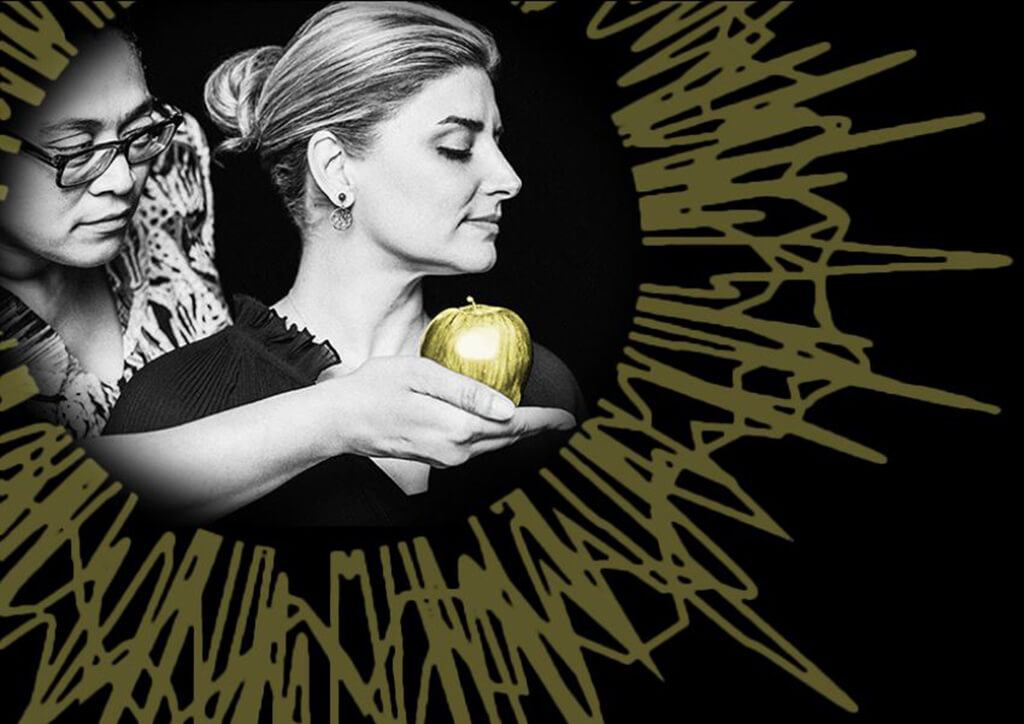Does Tapestry Opera’s Forbidden have the inspiration to make this risky opera work? We think so.

Although the concept of a Hip-Hop Opera is not new, the most famous attempt being Carmen: A Hip Hopera starring Beyoncé, Tapestry Opera’s Forbidden may have the inspiration to make this one work.
Unlike Carmen, Forbidden is a completely original story by librettist and rapper Donna-Michelle St. Bernard that explores “serious aspects of repression, countered with humorous commentary on human nature’s temptations to explore the forbidden.” This is combined with a newly composed score by Afarin Mansouri, which symbolically dissolves the boundaries between radically different musical genres including Persian classical music, hip-hop, and opera. In our interview, Mansouri explained that as an immigrant artist she approaches composition in a similar fashion to coming to a new country. It is about creating “a new identity, a new you” by bringing aspects from both worlds and unifying them.
Writing Opera versus Theatre
Nowhere better can this process be witnessed than in the collaborative writing of an opera like Forbidden. Writing an opera libretto is still a relatively new skill for Bernard. She first experienced it in Tapestry’s LIBLAB. She claims that the genre is completely different from theatre. In theatre, her writing is considered very sparse. However, in opera, Mansouri –– who also got her first taste of composing opera in the LIBLAB –– removed several of Bernard’s lines because they were too detailed. Mansouri argued that in opera the text must be even more immediate than theatre. Although she expressed her regret about having to remove so many of Bernard’s beautiful lines, Mansouri knew that in opera there must be time and space for the music to also carry meaning.
Bringing Rap into Classical Music
Although she wrote the text, Bernard was actively involved in shaping the hip-hop sound aesthetic. Normally hip-hop is a spontaneous, somewhat improvised, genre. However, opera is not. To combine the two, Bernard found herself having to come up with many of the elemental aspects in advance –– unamplified sounds such as stamping or hitting an object in the room –– so that they could be written in the score for the performers. This was not only new for her, but she found it exerted a lot of extra energy she wasn’t accustomed to during the creation process.
Mansouri’s score also takes creative approaches to showing how the boundaries between these genres can blend. She replaces beatboxing with Persian percussion. Bridging classical music with opera, each of these instruments represents a different character in the opera and what they are experiencing. For example, one represents Lucifer fighting with the ego, while another is what Mansouri described as a watery sound symbolizing Lucifer seducing his victims.
Artists Inspired by their Own Forbidden Experiences
The artists in Forbidden were inspired by experiences in their own lives that were forbidden. While growing up in Iran after the revolution, where women were not allowed to sing on the stage, Mansouri was forbidden to see opera, the very art form that inspires her today. Having only grown up with opera at home through recordings, she would reclaim the medium by composing a children’s opera based on a Persian story called “My Little Heart.”
Forbidden bridges more than musical taboos, but also sexual and cultural ones too. Säye Skye, a transgender Iranian rap artist and LGBTQ rights activist, was forced to leave his home and seek asylum, which eventually led him to Toronto. Leading a new hip-hop movement that has its basis in social consciousness, his personal experience will also impact this performance as they explore the changing forms of Lucifer through the combination of these three musical genres.
Forbidden as a Model for Today’s Political Climate?
Having sat in on a rehearsal, I got a sneak peek at how all these aspects come together. Because Forbidden is another newly commissioned work by Tapestry, one gets to experience the involvement of the creators in the eventual performance. During the rehearsal, Mansouri gave direction about her vision, and also took feedback from the performers about how to realize this work. Unlike operas composed 200 years ago that we revive, in Forbidden we will see a truly collaborative process that brings together musical genres and crosses cultures. Maybe this process can teach us more about how to mitigate differences between people today.
Tapestry Opera will be performing Forbidden in the Ernest Balmer Studio in the Historic Distillery District from February 8 to 11. For details, see here.
LUDWIG VAN TORONTO
Want more updates on Toronto-centric classical music news and reviews before anyone else finds out? Follow us on Facebook or Twitter for all the latest.
![]()



